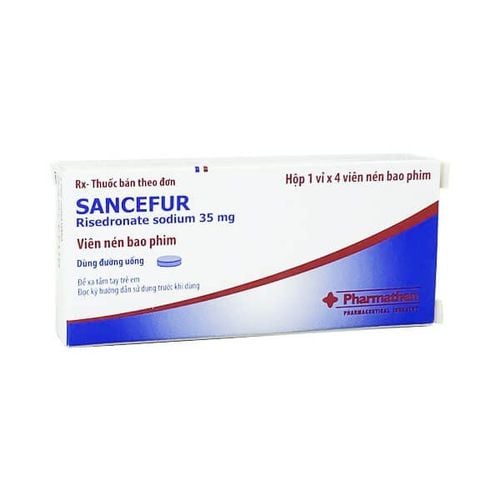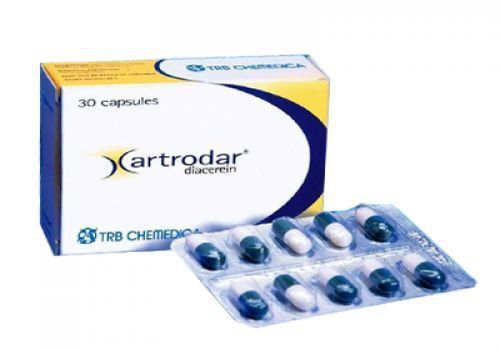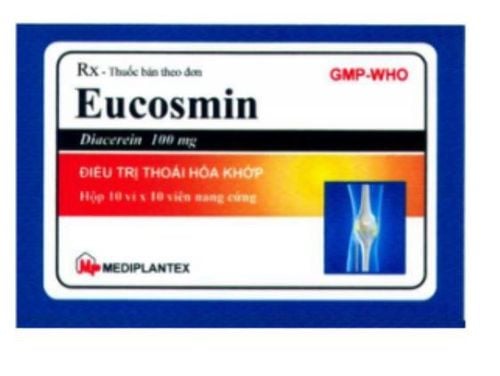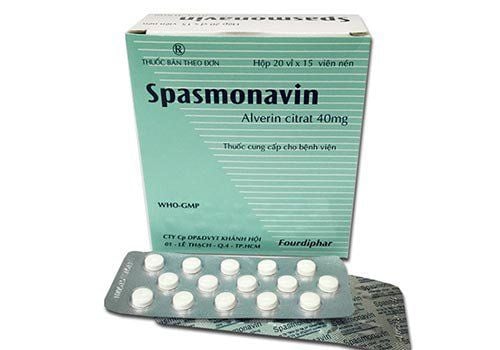This is an automatically translated article.
Diacenic medicine has the main active ingredient is Diacerein with a concentration of 50mg and other excipients in sufficient quantities. This is a pain reliever, antipyretic, non-Steroid anti-inflammatory drug and treatment of bone and joint diseases.1. What is Diacenic?
Diacenic medicine has the main active ingredient is Diacerein with a concentration of 50mg and other excipients in sufficient quantities. This is a pain reliever, antipyretic, non-Steroid anti-inflammatory drug and treatment of bone and joint diseases.Diacenic medicine is made in the form of hard capsules, suitable for direct oral use. Packing is a box of 2 blisters, each blister contains 10 capsules.
1.1. Pharmacodynamics of the main active ingredient Diacenic
According to the results of several in-vitro and in-vivo studies, the active ingredients Diacerein and Rhein, its active metabolite, inhibit the production and activity of Interleukin-1. Interleukin-1 is a proinflammatory and pro-catabolic agent, both in the superficial and deep layers of cartilage, in the synovial membrane and in the synovial fluid. At the same time, Interleukin-1 stimulates the production of transforming growth factor-α (TGF-β) and components of extracellular matrix such as proteoglycan, aggrecan, hyaluronic acid and type II collagen. In addition, these substances also have the ability to inhibit phagocytosis and migration of macrophages. In studies in several animal models of osteoarthritis, Diacerein reduced cartilage degeneration compared with the untreated group. Clinical studies have shown significant pain relief and significant improvement in joint function compared with placebo after 1 month of treatment with Diacerein. Other studies have also shown that the beneficial effects of Diacerein treatment persist for at least 2 months after treatment has been discontinued.1.2. Pharmacokinetics of the active ingredient Diacerein
After oral administration, the active ingredient Diacerein passes through the liver and is completely deacetylated to rhein. The average half-life of active ingredient Rhein is about 4.5 hours. Approximately 30% of the drug is excreted in the urine from the body. Approximately 80% of Rhein is excreted in the urine as sulpho and glucuroconjugated conjugates and about 20% as unchanged rhein. After repeated dosing (50 mg twice daily), Diacerein showed a slight potential for accumulation. In patients with severe renal impairment with creatinine clearance less than 30 ml/min, the AUC and half-life were doubled and urinary excretion was halved.2. What are the effects of Dimoxiti?
Diacenic is used to treat the signs and symptoms of osteoarthritis.3. Usage and dosage of Diacenic
Diacenic medicine is prepared in the form of hard capsules, suitable for direct oral use. For adults: Take 2 tablets daily, divided into 2 times, with meals. For patients with renal impairment: Reduce by half the dose for patients with renal impairment with creatinine clearance less than 30 ml/min.4. Undesirable effects of the drug Dimoxiti
The most common adverse effects of treatment with Diacenic are a rapid increase in intestinal transit time and abdominal pain. These signs and symptoms may appear during the first few days of treatment and, in most cases, they resolve spontaneously with continued treatment. Using Diacenic may make your urine darker yellow. You need to actively inform the treating doctor about the unwanted effects encountered when using Diacenic medicine.5. Some notes when using Dimoxiti
5.1. Contraindications of Dimoxiti
People with a history of sensitivity or hypersensitivity to the main active ingredient Diacerein and other ingredients contained in the drug. People with a history of allergy or hypersensitivity to Anthraquinone derivatives.5.2. Precautions of the drug Diacenic
Diacenic should not be prescribed to children under 15 years of age because there are no clinical studies on subjects using the drug in this age group. Diacenic should not be used concurrently with drugs with a laxative effect. Interactions with other drugs, other forms of interaction: Concomitant use of Diacenic with drugs containing salts, oxides or hydroxides of aluminum, calcium and magnesium should be avoided. This is because these drugs reduce the absorption of the main active ingredient, Diacerein. You can use these at a different time (more than 2 hours apart) after taking Diacenic . Use in pregnancy and lactation: Diacenic should not be used by pregnant women. In addition, treatment with Diacenic should not be prescribed to women who are breastfeeding. This is because it has now been reported that small amounts of diacerein derivatives pass into breast milk. Effects of Diacenic on the ability to drive and use machines: There are no specific reports on the risk effect of the main drug Diacerein on the ability to concentrate while driving. or operate machinery and equipment. Above is all information about Diacenic medicine, patients need to carefully read the instructions for use, consult a doctor / pharmacist before using. Absolutely do not arbitrarily buy Diacenic medicine to treat the disease at home, because there may be unwanted side effects on health.Please dial HOTLINE for more information or register for an appointment HERE. Download MyVinmec app to make appointments faster and to manage your bookings easily.













